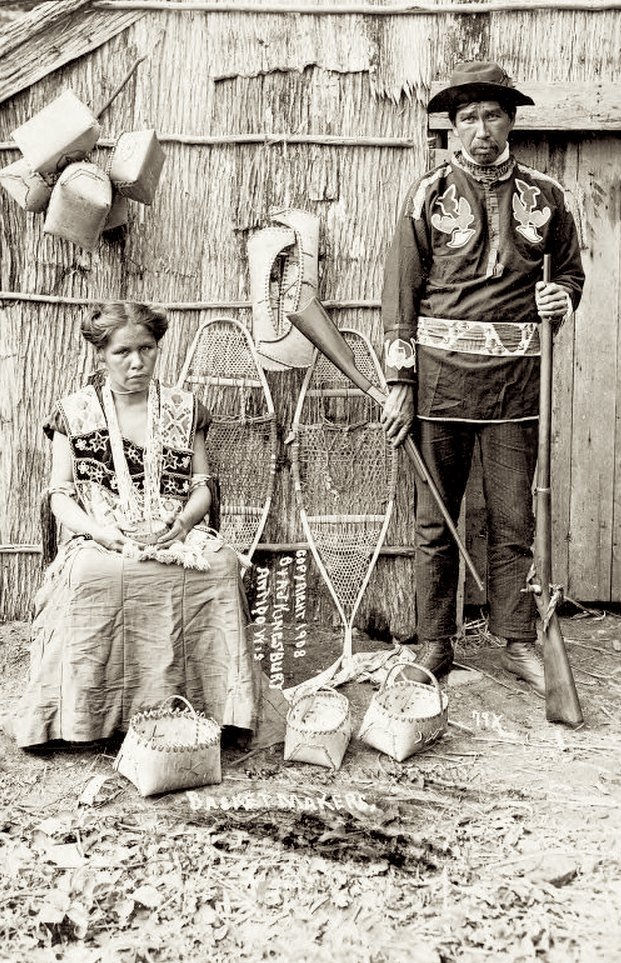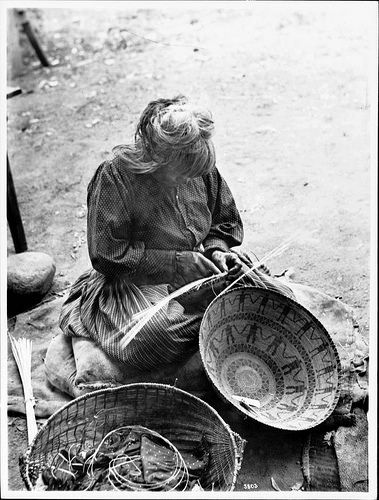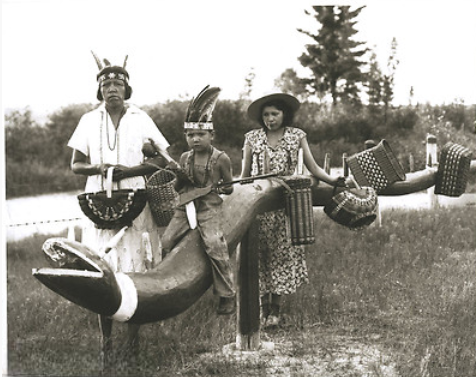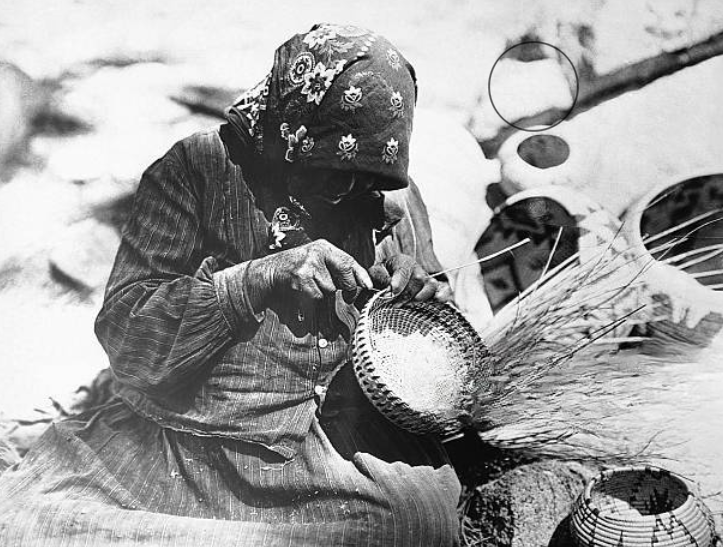In 1908, a rare photograph captured a group of Ojibwe basket makers at work, skillfully weaving baskets that embodied the heart of an age-old tradition. These baskets, made from natural materials such as birch bark, sweetgrass, and ash, were more than just everyday objects. They were symbols of cultural pride, environmental harmony, and ancestral wisdom, carefully crafted by hand and passed down through generations.

A Tradition Rooted in Nature
The art of basket making has been a central part of Ojibwe culture for centuries. The Ojibwe people, also known as the Chippewa, are indigenous to regions in both the United States and Canada. Their tradition of using natural materials to create baskets speaks to their deep connection with the land. These baskets were made from locally sourced materials, such as birch bark and sweetgrass, which were harvested sustainably, reflecting the Ojibwe respect for the environment.

The process of gathering materials was carefully planned to ensure that the ecosystem remained balanced. Only what was needed was taken, with great attention to the regeneration of plants and trees. This sustainable approach not only benefited the environment but also ensured that future generations could continue to rely on the same resources.
Video: OjibwayTV – Frankie Teaches Ojibway: Basket Weaving
Cultural Significance and Storytelling
Ojibwe baskets are not only functional but are also deeply symbolic. The intricate designs woven into the baskets often had spiritual and cultural meanings. Each basket told a story, whether it represented the connection to nature, family, or ancestors. Many baskets were used in ceremonies or for carrying food and sacred items. The act of weaving itself was an expression of spirituality, a practice that connected the maker to their heritage.
The communal nature of basket making also played an essential role in Ojibwe life. Elders passed down their skills and knowledge to younger generations, ensuring that this tradition would endure. Families and communities often worked together, sharing their expertise and stories as they crafted their baskets. In this way, basket making was more than just a craft it was a means of preserving and celebrating Ojibwe culture.

A Symbol of Resilience and Identity
In the 1908 photograph, Ojibwe basket makers are seen at work, their hands weaving baskets that are both practical and artistic. This image serves as a powerful symbol of cultural resilience. The Ojibwe people have faced numerous challenges throughout history, yet their traditions, like basket making, have remained strong. These baskets are a representation of identity, not just as objects but as carriers of heritage, history, and wisdom.
Video:
Changing Climate, Changing Culture…Making An Ojibwe Birch Bark Winnowing Basket
Despite the challenges that come with modernization, the tradition of basket making continues to thrive today. Many Ojibwe artisans still create beautiful baskets using traditional methods, while also incorporating modern influences. This continuity is a testament to the enduring nature of their culture, with each basket serving as a living link to the past.
Conclusion: A Legacy Woven by Hand
The photograph of Ojibwe basket makers from 1908 is a window into the past, offering a glimpse into the enduring craft that has shaped Ojibwe culture for centuries. Each basket is more than just a functional item; it is a symbol of cultural pride, environmental respect, and ancestral wisdom. Through the art of basket making, the Ojibwe people continue to pass on their stories, ensuring that their tradition will remain alive for generations to come. The legacy of these artisans is a reminder of the importance of culture, community, and the sustainable use of the natural world.



